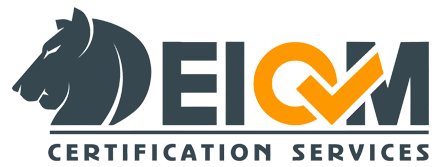ISO 21500 highlights the significance of risk management in project execution. It encourages organizations to identify, assess, and mitigate risks throughout the project lifecycle to minimize the impact of potential issues.
What is ISO 21500?
In today’s complex business environment, effective project management is crucial for organizations to achieve their objectives. This standard, also known as the International Standard for Project Management, provides guidelines and best practices for project management processes. This article explores the key aspects of ISO 21500, its benefits, implementation steps, and its relationship with other project management frameworks.
Understanding the Importance of ISO Standards
ISO standards are globally recognized benchmarks that promote consistency, quality, and efficiency across industries. ISO 21500 specifically focuses on project management, providing organizations with a common language and framework to manage projects effectively. By adhering to This standard, businesses can enhance their project management practices, improve outcomes, and minimize risks.
Key Principles of ISO 21500
ISO 21500 is built upon a set of key principles that form the foundation of effective project management. These principles include:
- Leadership and Commitment
Successful project management requires strong leadership and commitment from all stakeholders involved. Leaders must provide clear direction, allocate resources, and support the project team throughout the project lifecycle.
- Project Governance
This standard emphasizes the importance of establishing appropriate project governance structures. This involves defining roles, responsibilities, and decision-making processes to ensure efficient project execution.
- Stakeholder Engagement
Engaging stakeholders is crucial for project success. ISO 21500 encourages organizations to identify and involve relevant stakeholders throughout the project lifecycle to ensure their needs and expectations are met.
- Planning and Control
Effective planning and control are vital for project management. This standard emphasizes the need for comprehensive project planning, including defining objectives, scope, deliverables, and establishing monitoring and control mechanisms.
- Risk Management
ISO 21500 highlights the significance of risk management in project execution. It encourages organizations to identify, assess, and mitigate risks throughout the project lifecycle to minimize the impact of potential issues.
- Continuous Improvement
Continuous improvement is a core principle of This standard. It urges organizations to evaluate project performance, learn from past experiences, and implement improvements in future projects.
Benefits of Implementing ISO 21500
Implementing This standard offers numerous benefits to organizations:
- Enhanced Project Management: ISO 21500 provides a structured approach to project management, ensuring consistency and quality in project delivery.
- Improved Stakeholder Communication: By engaging stakeholders effectively, organizations can align their expectations and ensure their involvement throughout the project.
- Mitigated Risks: This standard emphasizes proactive risk management, helping organizations identify and mitigate risks before they become major issues.
- Increased Efficiency: Following This standard principles improves project planning and control, resulting in more efficient resource allocation and reduced waste.
- Competitive Advantage: Organizations that adopt This standard demonstrate their commitment to best practices in project management, giving them a competitive edge in the market.
How ISO 21500 Aligns with Other Project Management Frameworks
ISO 21500 complements various project management frameworks such as PMBOK (Project Management Body of Knowledge) and PRINCE2 (Projects in Controlled Environments). While each framework has its unique features, This standard provides overarching principles and guidelines that can be integrated into existing frameworks, enhancing their effectiveness and consistency.
Steps to Implement ISO 21500 in Your Organization
Implementing This standard requires careful planning and execution. Here are the steps to consider:
- Familiarize Yourself: Gain a thorough understanding of ISO 21500 and its requirements to prepare for implementation.
- Assess Current Practices: Evaluate your organization’s existing project management practices to identify gaps and areas for improvement.
- Develop an Implementation Plan: Create a detailed plan outlining the steps, resources, and timelines required to implement This standard.
- Communicate and Train: Ensure all stakeholders are aware of the upcoming changes and provide training to employees on ISO 21500 principles and practices.
- Implement and Monitor: Roll out the new project management practices, monitor their effectiveness, and make adjustments as necessary.
- Seek Certification: Consider obtaining This standard certification to demonstrate your organization’s commitment to project management excellence.
Common Misconceptions About ISO 21500
There are several misconceptions surrounding This standard. Let’s address a few:
- This standard is Only for Large Organizations: ISO 21500 can be applied to projects of any size, regardless of the organization’s scale.
- This standard Involves Excessive Documentation: While This standard encourages documentation, the level of detail depends on the complexity and risk of the project.
- This standard is Strictly Prescriptive: This standard provides guidelines, but organizations have flexibility in tailoring the approach to suit their specific needs.
Conclusion
ISO 21500 serves as a valuable framework for organizations seeking to improve their project management practices. By adhering to its principles, organizations can enhance project delivery, mitigate risks, and achieve better outcomes. Implementing This standard requires careful planning, communication, and continuous improvement to maximize its benefits.
Contact EIQM
To contact us, please fill out the form below. We will contact you as soon as possible. You can also apply through this form if you would like to receive system certification or representation of EIQM Certification Body.

